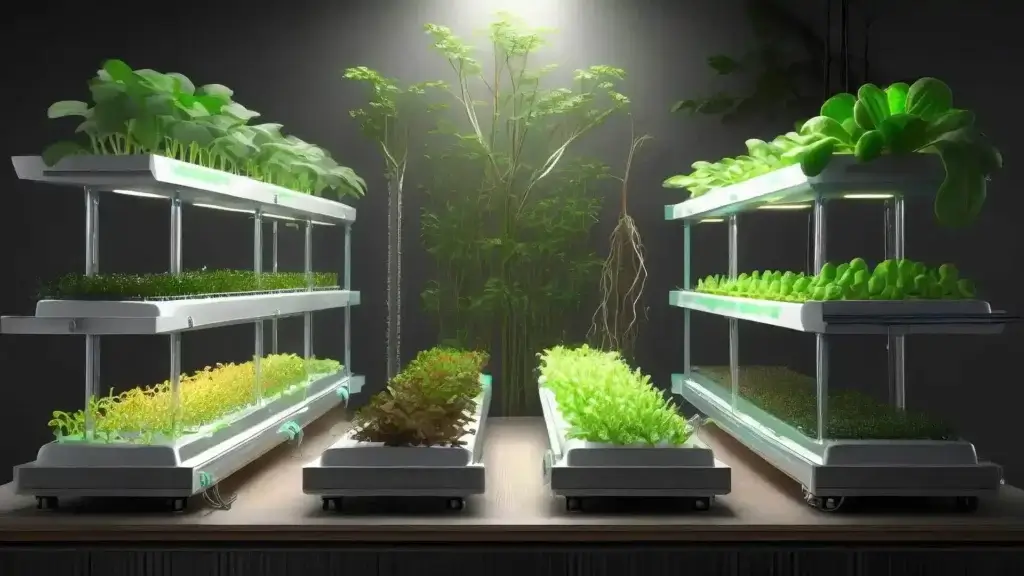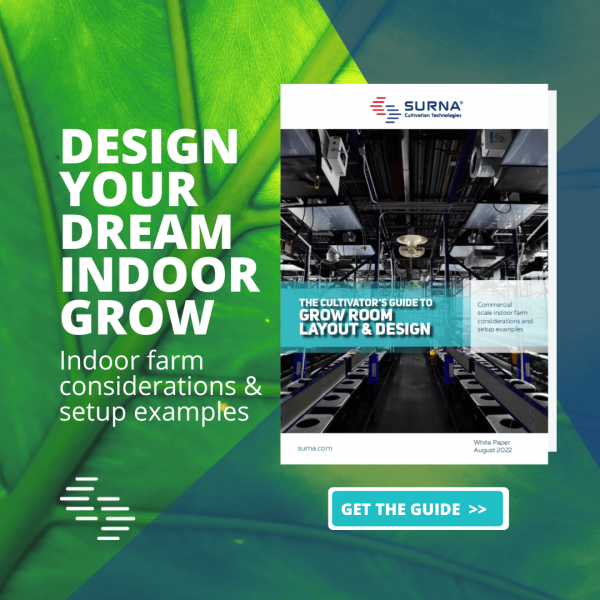
Are traditional farming methods struggling to meet the demands of our growing population and dwindling resources?
With challenges like water scarcity and soil degradation on the rise, it’s time to rethink how we grow our food. Traditional farming practices often fall short in addressing these issues, leaving farmers and consumers alike searching for sustainable solutions.
Enter hydroponics – a soilless farming technique that offers a promising alternative. In this blog, we’ll explore the definition, importance, and benefits of hydroponic systems over traditional agriculture.
Table of Contents
What is Hydroponics?
Hydroponics is a soilless farming technique that involves growing plants in a nutrient-rich water solution, directly delivering essential nutrients to the roots. Unlike traditional soil-based farming, hydroponics relies on various systems to support plant growth, emphasizing water efficiency and controlled nutrient delivery.
Importance of hydroponic systems in agriculture:
Hydroponic systems play a pivotal role in modern agriculture by offering innovative solutions to traditional farming challenges. They enable cultivation in diverse environments, including urban areas with limited space and arid regions with poor soil quality.
Additionally, hydroponic techniques provide a sustainable alternative to conventional farming practices, conserving water resources and minimizing environmental impacts such as soil erosion and nutrient runoff.
Experts at a grow shop in London suggest exploring hydroponic systems for their efficiency, versatility, and environmental benefits, emphasizing their potential to revolutionize farming practices and address global food security issues.
Benefits of hydroponics over traditional soil-based farming
Hydroponics offers several advantages over traditional soil-based farming methods, contributing to enhanced productivity, resource efficiency, and crop quality. These benefits include:
1. Water Efficiency: Hydroponic systems use up to 90% less water compared to conventional farming, as water is recycled within closed-loop systems, reducing waste and promoting sustainable water management.
2. Space Utilization: Hydroponic systems can be implemented vertically or in compact indoor setups, maximizing space utilization and enabling year-round cultivation, making them suitable for urban agriculture and areas with limited arable land.
3. Nutrient Control: Hydroponic systems allow precise control over nutrient composition and delivery, ensuring optimal plant nutrition and minimizing the risk of nutrient deficiencies or imbalances, leading to healthier and more productive crops.
4. Faster Growth Rates: Plants grown hydroponically often exhibit accelerated growth rates compared to those cultivated in soil, attributed to direct access to nutrients and optimized environmental conditions, resulting in higher yields and quicker harvest cycles.
5. Reduced Pest and Disease Pressure: Soilless cultivation minimizes the risk of soil-borne pests and diseases, reducing the need for chemical pesticides and enhancing crop resilience, thereby promoting safer and more environmentally friendly food production.
Types of Hydroponic Systems
Type 1: Nutrient Film Technique (NFT)
The Nutrient Film Technique (NFT) is a hydroponic system where a shallow stream of nutrient solution continuously flows over the roots of plants, allowing them to absorb essential nutrients while being suspended in the air. Unlike other hydroponic systems, NFT does not require a solid growing medium; instead, plants’ roots are exposed to a thin film of nutrient solution.
Components required:
- Channels: Channels or gullies where plants are placed and nutrient solution flows.
- Nutrient reservoir: A container holding the nutrient solution.
- Pump: To circulate the nutrient solution through the channels.
Working mechanism
Nutrient solution is pumped from the reservoir to the highest end of the channels, flowing down through a slight gradient. As the solution moves along the channel, plant roots absorb the necessary nutrients while being continuously bathed in the flowing solution. The excess solution is then collected and returned to the reservoir for recirculation, ensuring a constant supply of nutrients to the plants.
Advantages:
Water-efficient: NFT systems use less water compared to traditional soil-based farming as the nutrient solution is recirculated.
Space-saving: Suitable for vertical farming and indoor cultivation due to the absence of bulky growing media.
Reduced risk of root diseases: Constant flow of nutrient solution prevents waterlogging and promotes oxygenation, reducing the likelihood of root rot.
Disadvantages:
Dependency on power: Requires a continuous power supply to operate the pump for nutrient circulation.
Sensitivity to system failures: Any interruption in nutrient flow can quickly impact plant health.
Limited support for larger plants: NFT systems are more suitable for smaller plants with shallow root systems.
Type 2. Deep Water Culture (DWC)
Deep Water Culture (DWC) is a hydroponic system where plant roots are suspended in a nutrient-rich solution, typically contained in a reservoir. Unlike other systems, DWC does not use a growing medium like soil or coco coir; instead, plants’ roots are directly immersed in the aerated nutrient solution.
Components required:
- Reservoir: Container to hold the nutrient solution.
- Air pump: Provides oxygen to the nutrient solution by circulating air through it.
- Air stone: Creates bubbles in the nutrient solution, promoting oxygenation and preventing stagnation.
Working mechanism:
In a DWC system, plant roots are suspended in the nutrient solution, allowing them to directly absorb the required nutrients. The air pump continuously supplies oxygen to the solution through the air stone, ensuring roots receive adequate aeration. As plants grow, their roots extend into the nutrient solution, facilitating nutrient uptake and supporting healthy growth.
Advantages:
Simple setup: DWC systems are relatively easy to assemble and maintain, making them suitable for beginners.
Enhanced nutrient absorption: Direct exposure of roots to the nutrient solution promotes efficient nutrient uptake, leading to faster growth and higher yields.
Reduced water usage: Nutrient solution is recirculated within the system, minimizing water wastage compared to traditional soil-based farming.
Disadvantages:
Risk of oxygen deprivation: Inadequate oxygenation of the nutrient solution can lead to root rot and plant suffocation.
Vulnerability to temperature fluctuations: DWC systems may require additional insulation or temperature control measures to prevent nutrient solution overheating or cooling.
Limited support for larger plants: DWC systems may not be suitable for crops with extensive root systems or heavy nutrient demands.
Type 3. Ebb and Flow (Flood and Drain)
Ebb and Flow, also known as Flood and Drain, is a hydroponic system where plants are periodically flooded with nutrient solution before draining back into a reservoir. This cyclic flooding and draining process ensures plants receive water and nutrients while preventing waterlogging and promoting oxygenation of the root zone.
Components required:
- Growing tray: Holds the plants and growing medium.
- Nutrient reservoir: Container to store the nutrient solution.
- Pump: Moves the nutrient solution from the reservoir to the growing tray.
Working mechanism:
In an ebb and flow system, nutrient solution is pumped from the reservoir into the growing tray, flooding it to a predetermined level. Plants’ roots absorb water and nutrients during the flooding phase. Once the flooding period ends, excess solution drains back into the reservoir, allowing roots to access oxygen from the air. This intermittent flooding and draining cycle repeats at regular intervals to maintain optimal growing conditions.
Advantages:
Enhanced aeration: Periodic draining allows roots to access oxygen, preventing suffocation and promoting healthier root development.
Versatility: Suitable for various plant types and growth stages, from seedling to maturity.
Reduced risk of nutrient imbalances: Regular flooding and draining help prevent nutrient buildup and ensure consistent nutrient delivery to plants.
Disadvantages:
Complexity: Ebb and flow systems may require more intricate setup and maintenance compared to other hydroponic systems.
Potential for pump failure: Reliance on a pump for nutrient circulation means system downtime in the event of pump failure.
Risk of overwatering: Improper timing or duration of flooding can lead to waterlogging and root rot, affecting plant health and productivity.
Type 4. Drip System
The drip system, also known as drip irrigation, is a hydroponic system where nutrient solution is delivered directly to the base of each plant through a network of drip lines and emitters. This method allows for precise and controlled irrigation, delivering water and nutrients directly to the root zone while minimizing water wastage.
Components required:
- Drip lines: Tubing that delivers nutrient solution to each plant.
- Emitters: Devices attached to drip lines that regulate the flow of solution.
- Timer: Controls the frequency and duration of nutrient solution delivery.
- Nutrient reservoir: Container holding the nutrient solution to be distributed through the system.
Working mechanism
In a drip system, nutrient solution is pumped from the reservoir through the drip lines to the emitters, where it is dripped onto the base of each plant. The timer controls the frequency and duration of irrigation cycles, ensuring plants receive adequate moisture and nutrients. Excess solution not absorbed by plants is collected and recirculated back to the reservoir, minimizing waste and promoting resource efficiency.
Advantages:
Precise nutrient delivery: Allows for targeted delivery of water and nutrients directly to the root zone, optimizing plant uptake and minimizing nutrient waste.
Scalability: Suitable for small-scale to large-scale operations, making it adaptable to different growing environments and crop sizes.
Reduced risk of water-related diseases: By avoiding direct contact with foliage, drip irrigation helps prevent moisture-related diseases such as powdery mildew and fungal infections.
Disadvantages:
Clogging risk: Drip lines and emitters may become clogged with sediment or organic matter, requiring regular maintenance and cleaning.
Dependency on reliable water supply: Requires consistent water pressure and quality to ensure proper functioning of the system.
Initial setup costs: Installation of drip irrigation systems can be more expensive compared to other hydroponic methods, especially for larger-scale operations.
Type 5. Aeroponics
Aeroponics is a high-tech hydroponic system where plant roots are suspended in air, and nutrient solution is misted onto them at regular intervals. This method promotes optimal nutrient uptake and root oxygenation, leading to rapid plant growth and increased yields.
Components required:
- Sprayers: Devices that generate a fine mist of nutrient solution.
- Nutrient reservoir: Container holding the nutrient solution to be misted onto the roots.
- Misting chamber: Enclosure where plant roots are suspended and nutrient solution is sprayed onto them.
Working mechanism:
In an aeroponic system, plant roots are suspended in a misting chamber, while nutrient solution is pumped from the reservoir and sprayed onto the roots as a fine mist. This mist provides plants with water, oxygen, and essential nutrients, promoting healthy root development and vigorous growth. The system typically operates on a timer, delivering nutrient solution at regular intervals to ensure consistent hydration and nourishment.
Advantages:
Enhanced nutrient absorption: Misting nutrient solution directly onto roots maximizes nutrient uptake efficiency, leading to faster growth and higher yields.
Oxygenation of root zone: Air exposure in aeroponic systems promotes root oxygenation, preventing root suffocation and enhancing plant resilience.
Water efficiency: Aeroponic systems use less water compared to traditional soil-based farming, as nutrient solution is recycled and reused within the closed-loop system.
Disadvantages:
Technical complexity: Aeroponic systems require precise control of environmental factors such as humidity, temperature, and nutrient concentration, which can be challenging for inexperienced growers.
Susceptibility to system failures: Any malfunction in nutrient delivery or misting components can quickly impact plant health and productivity.
Initial investment cost: Setup and maintenance of aeroponic systems can be costly, requiring specialized equipment and technology.
Conclusion
Hydroponic systems offer modern solutions for farming challenges, providing efficient methods like NFT, Ebb, and Flow. These systems control nutrients, maximize space, and promote sustainability. With techniques like Drip and Aeroponics, tailored solutions meet diverse needs. Hydroponics tackles water scarcity, soil issues, and food insecurity, enabling high yields, resource savings, and environmental protection. Investing in research and education is key to enhancing these methods worldwide. Hydroponics promises a sustainable future in farming, nourishing our planet and communities.
Author Bio
BNJ Gardens, a hydroponic shop with locations in Manchester and London, specializes in providing innovative solutions for urban farming and sustainable agriculture.

